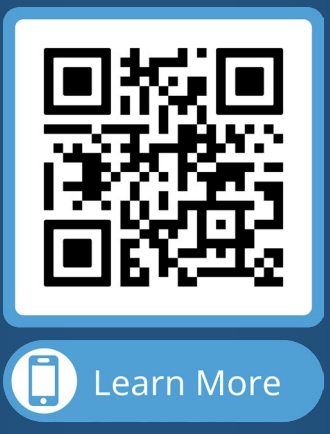Signs of Autism in Infants and Babies:
A Comprehensive Guide for Parents

Autism Spectrum Disorder (ASD) is a developmental condition that affects communication, behavior, and social interaction. While autism is usually diagnosed around the age of two or later, signs of autism in infants can begin to appear as early as the first few months of life. Identifying these early signs can lead to earlier interventions, which are shown to significantly improve developmental outcomes.
If you are a parent or caregiver, understanding the early signs of autism in babies can empower you to seek help and support sooner rather than later. This guide will walk you through the most common indicators of autism in infants, how to distinguish autism from other possible medical conditions, and what steps you can take if you suspect your baby may be showing signs of developmental delays.
Why Early Detection of Autism in Infants Matters
Detecting autism in infants is challenging because babies naturally develop at different rates. However, early intervention is critical. The earlier a child receives support, the better their chances of improving social, communication, and behavioral outcomes.
While a diagnosis of autism under age one is rare, recognizing early behavioral signs can allow you to begin therapies that help support your baby’s development—regardless of a formal diagnosis.
What Are the Early Signs of Autism in Infants?
Though every child is unique, there are several signs of autism in infants that parents should be aware of. These signs often involve difficulties with communication, eye contact, social interaction, and sensory processing.
Behavioral and Social Red Flags
Visual Attention
- Prolonged latency to disengage visual attention
- Unusual Focus on Objects: Some babies stare at ceiling fans, shadows, or light patterns, appearing detached from surroundings.
Early Temperament
- Passivity
- Extreme distress reaction
- Fixation on objects in environment
Sensory and Physical Behavior
- Sleep Difficulties: Persistent sleep problems or trouble self-soothing may be linked to sensory processing issues.
- Sensitivity to Noise: Your baby may not react to loud noises or startling sounds—or may overreact to soft ones.
- Rigid Routines: Even at an early age, your child may show extreme distress when routines or environments change.
- Limited Babbling or Vocalization: Lack of babbling, cooing, or baby talk by 12 months is a common concern.
Distinguishing Autism from Other Conditions in Infants
It is important to remember that these symptoms are not exclusive to autism. Several medical and developmental conditions can present similar signs in infancy. These include:
- Hearing Impairment: A baby who doesn't respond to sounds may have an undiagnosed hearing issue.
- Seizure Disorders: Conditions like Petit Mal seizures can cause short lapses in awareness, which may be mistaken for autistic behavior. These seizures can occur hundreds of times per day without parents noticing.
- Sensory Processing Disorder (SPD): SPD can exist with or without autism and may cause similar reactions to textures, sounds, and lights.
- Food Allergies or GI Issues: Discomfort or allergies can lead to sleep problems, irritability, and behavioral issues in babies.
Because these symptoms can overlap, it's essential to consult with a pediatrician to rule out or address any other underlying issues.
When to Consult Your Pediatrician
If your child is showing multiple signs of autism in infancy, it’s time to speak with your pediatrician. You don’t need a diagnosis to start getting help. In fact, many developmental services are available for children under three through early intervention programs, even before a formal autism evaluation is completed.
Some of the red flags to watch for include:
- No smiling or joyful expressions by 6 months
- No back-and-forth sharing of sounds, smiles, or facial expressions by 9 months
- No babbling or vocalizing by 12 months
- No gestures like pointing, waving, or reaching by 12 months
- No response to name by 12 months
Checklist: Early Signs of Autism in Toddlers (12–24 Months)
Though this article focuses on infants, it’s helpful to know how symptoms might evolve as your child approaches toddlerhood:
- No spoken words by 16 months
- No meaningful two-word phrases (not just mimicking) by 24 months
- Ongoing lack of eye contact or interaction with others
- Repetitive behaviors or obsessive focus on specific objects
- Resistance to change in routine or surroundings
Treatment Options for Infants Showing Signs of Autism
Although therapies for infants are more limited than for older children, starting early can significantly reduce developmental delays. Intervention can focus on improving sleep, managing behavior, and supporting communication.
Possible Interventions Include:
- Developmental Therapy: Helps promote communication, motor, and cognitive skills.
- Speech Therapy: Supports early language development, even before a child is verbal.
- ABA (Applied Behavior Analysis): An evidence-based therapy often used to reduce problematic behaviors and teach new skills.
- Sensory Integration Therapy: Helps manage sensitivities to sounds, textures, or movement.
- Parent Training: Empowers caregivers with strategies to support development through play and interaction.
Infant Sibling Project Offers Groundbreaking Early Autism Detection
At the New England Center for Children in Southboro, Massachusetts, psychologist Dr. Rebecca MacDonald is leading innovative research through the Infant Sibling Project, which focuses on identifying the earliest signs of autism in infants—some as young as eight weeks old. Unlike traditional autism screening tools that rely on parent questionnaires at 16 months, the project uses direct observation and interaction to detect subtle behavioral differences in babies under six months, particularly those with an older sibling diagnosed with autism.
The Infant Sibling Project at the New England Center for Children builds on a 2017 study from the Wisconsin Early Autism Project, which found that early behavioral intervention helped 13 out of 14 at-risk infants develop typically by 24 months. The current study aims to replicate and expand those results. By March of 2019, the team had enrolled 20 infants with older siblings diagnosed with autism and identified signs of autism in five of them—a 25% prevalence rate consistent with the earlier findings.
Dr. MacDonald and her team visit families' homes biweekly, closely monitoring infants for early autism indicators like poor eye contact, lack of social engagement, or failure to respond to their name. If symptoms are detected, the team implements in-home Applied Behavior Analysis (ABA) therapy, starting with as little as 10 hours per week and scaling as needed. One child identified at just 8 weeks received therapy and, by 16 months, showed dramatic developmental improvement.
The program is based on prior findings that early, intensive behavioral intervention—when started before traditional symptom onset at 12–18 months—can normalize development by age 2 in many children at risk. With up to 25% of younger siblings of children with autism showing early symptoms, the project seeks to change the timeline of autism detection and give families a critical head start in accessing support.
As of June 2025, I reached out to one of the researchers and was told it would be at least a couple of years before the results of the new study are finalized. Parents within 90 minutes of Southboro, MA with infants under 6 months who have a sibling on the autism spectrum are invited to participate. For more information or to scan the QR code or click on the learn more button.
Final Thoughts
Recognizing the signs of autism in infants can be an emotional and overwhelming experience, but knowledge is power. You don’t have to wait for a formal diagnosis to begin helping your baby. Trust your instincts, monitor your child’s development, and don’t hesitate to ask questions or request evaluations from your healthcare provider.
The earlier you start, the more support you and your child can receive—and the greater the chance for meaningful progress.
If you haven't already, be sure to check out my ebooks, now on Amazon!
References
1. Autism Symptoms and Early Signs. www.helpguide.org. 10-15-10.



